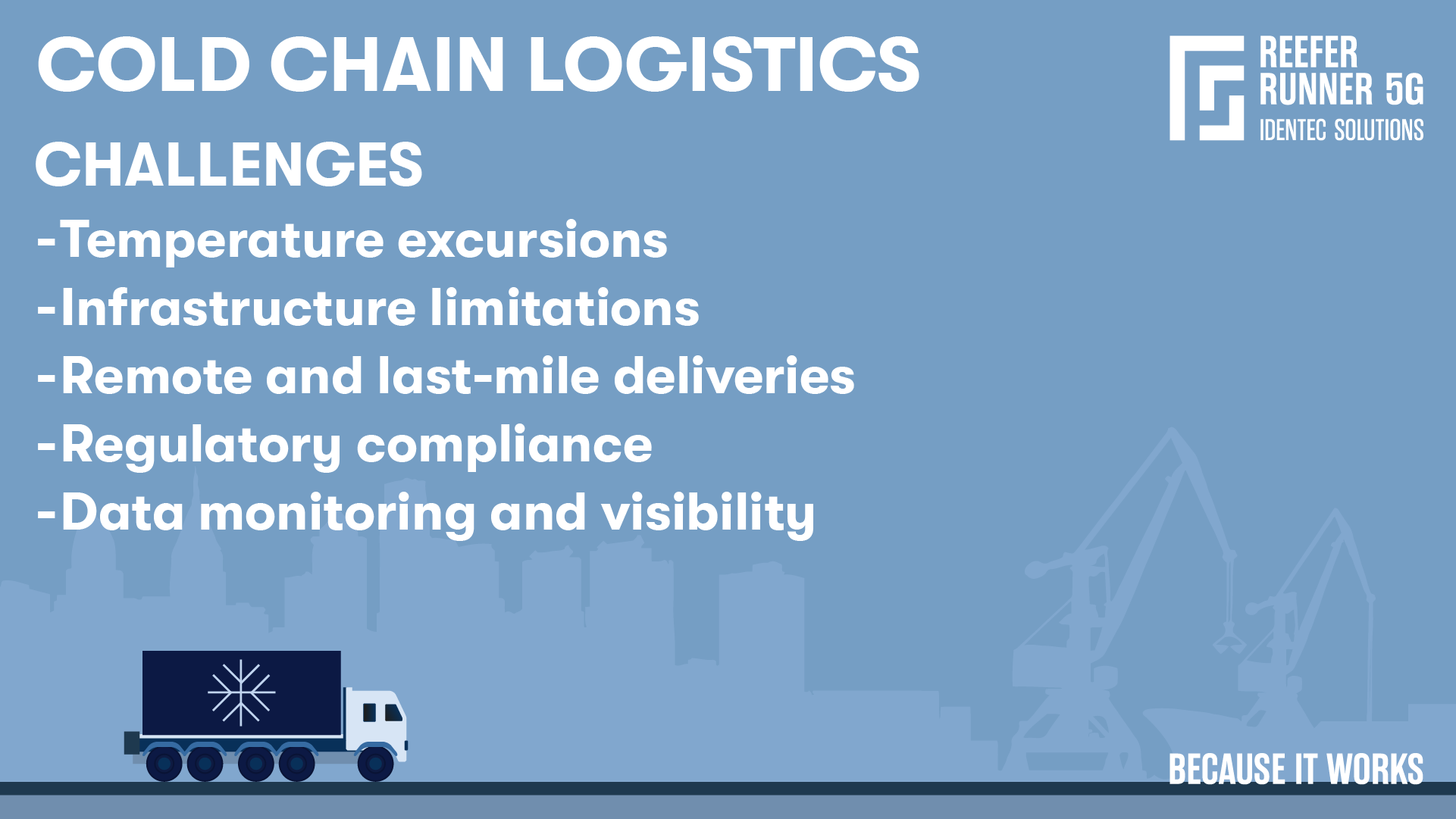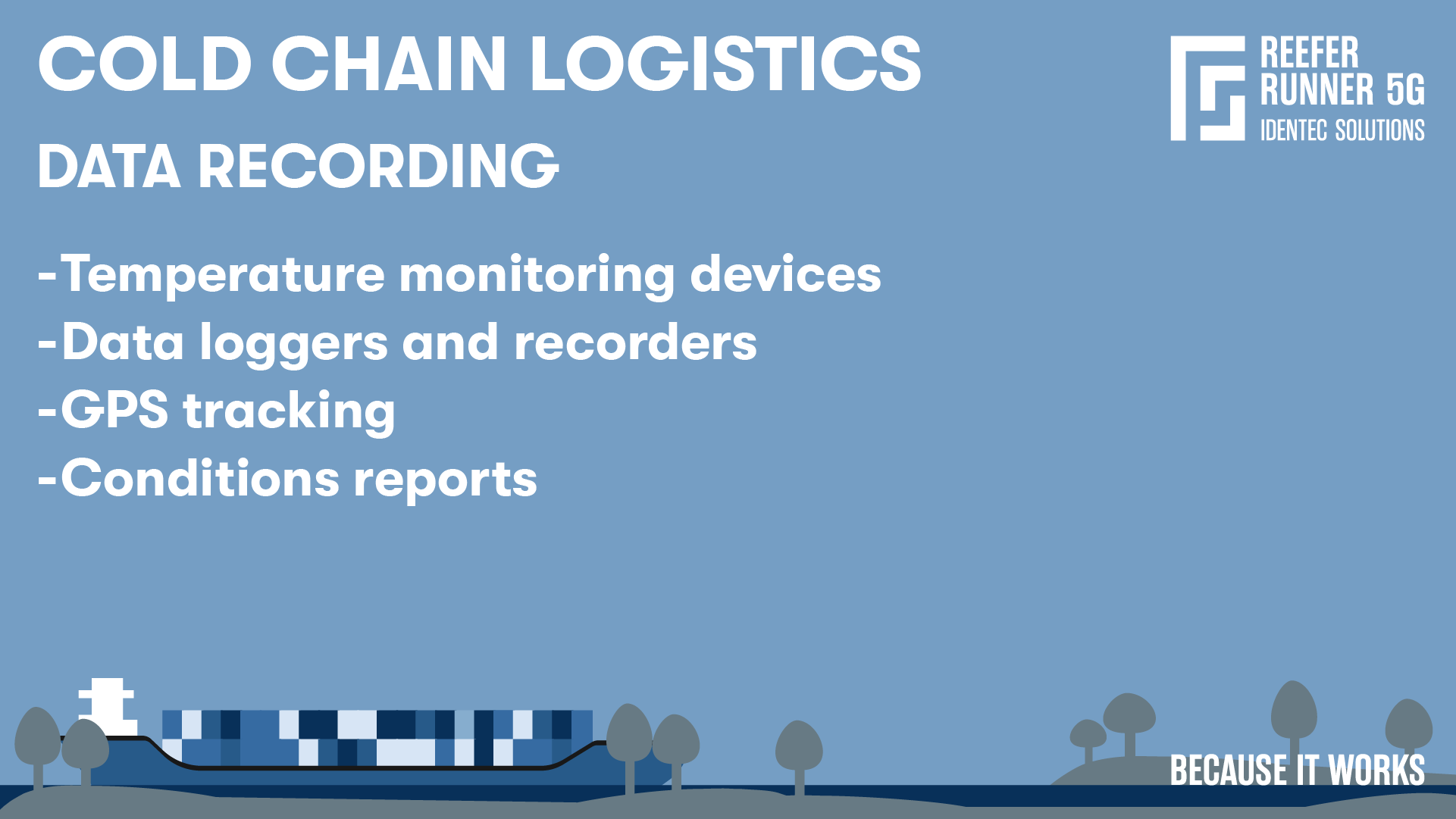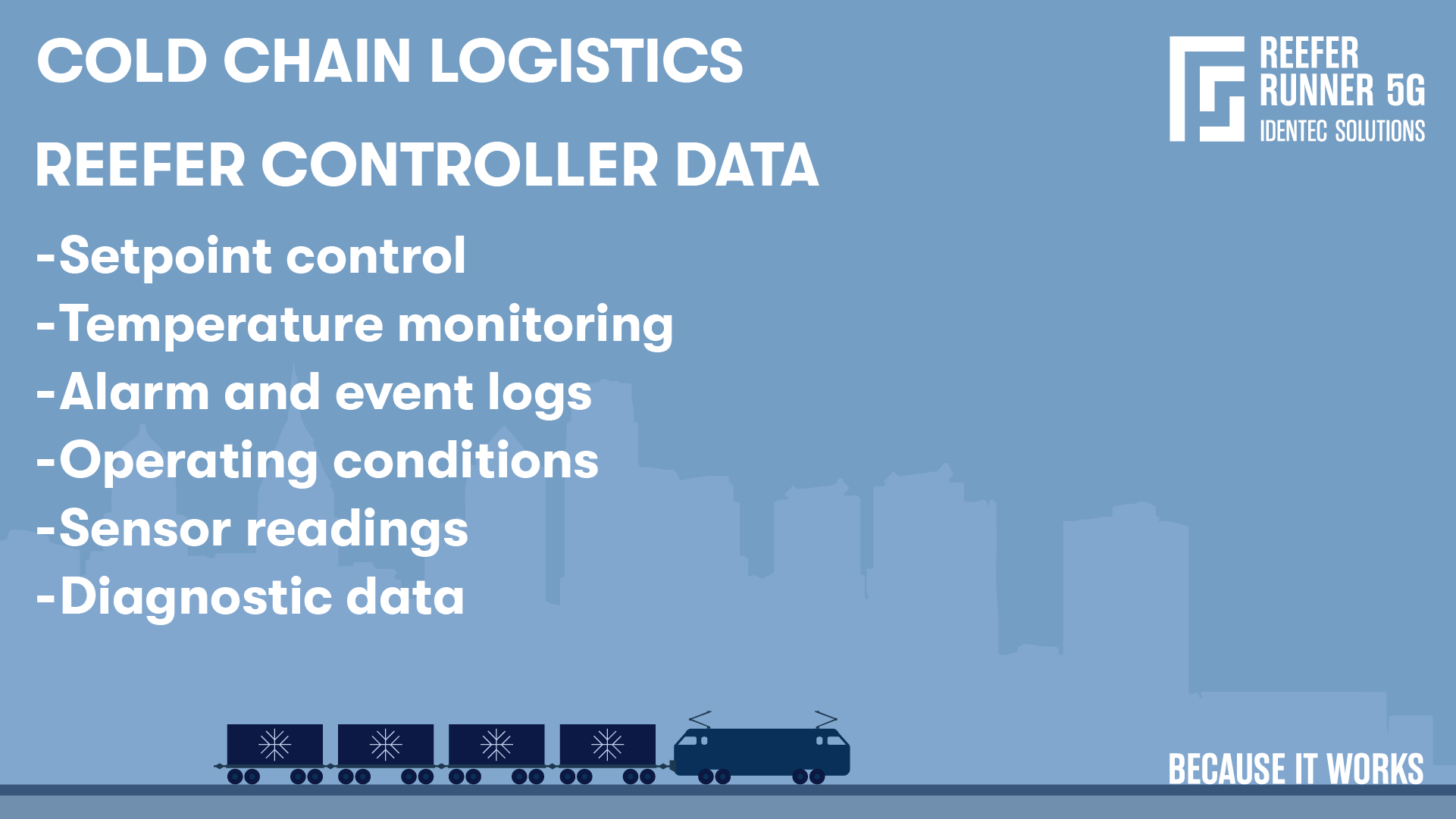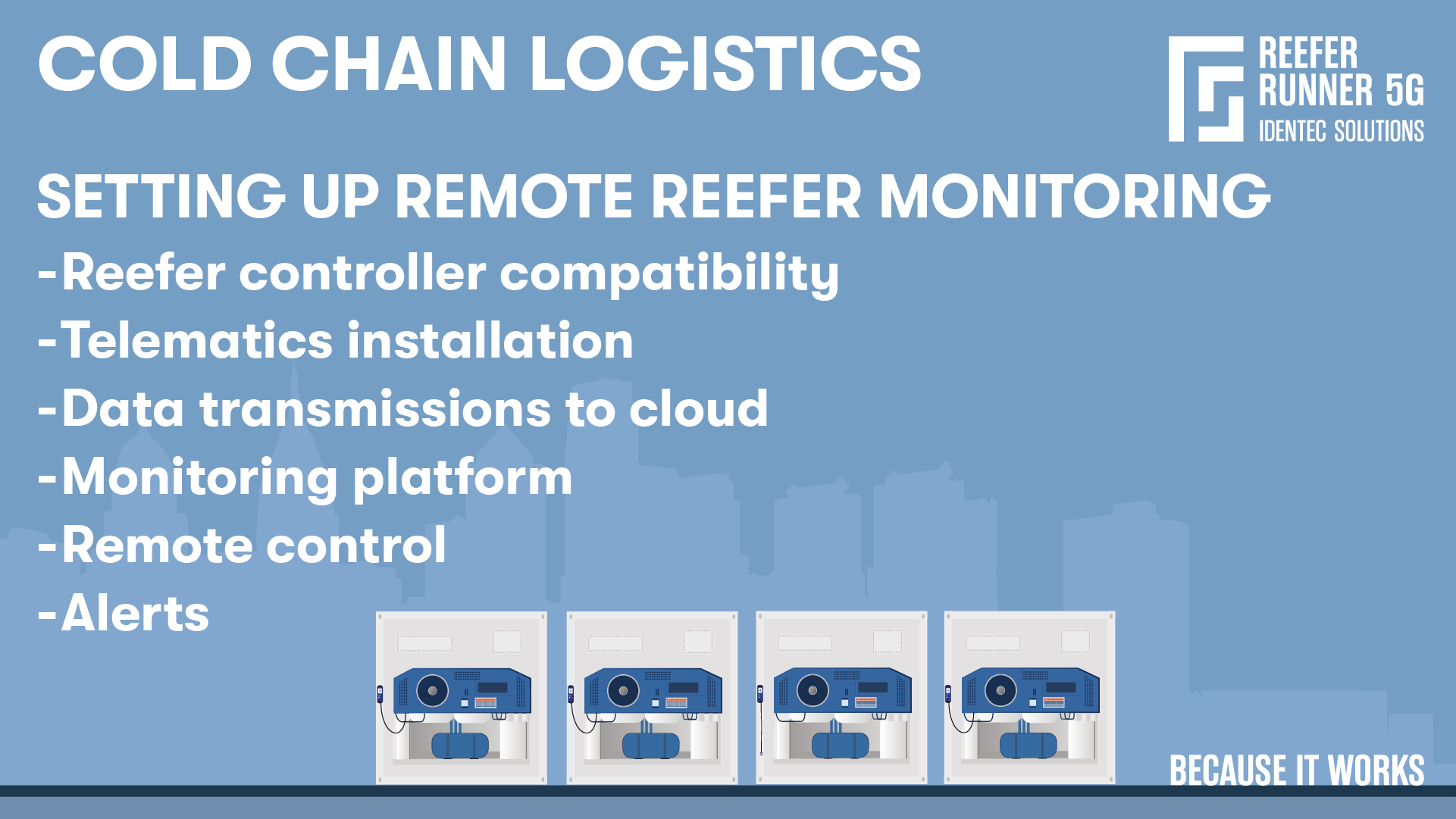Revolutionizing Cold Chain Logistics: Enhancing Reefer Visibility for Seamless Operations
| Written by Mark Buzinkay

No video selected
Select a video type in the sidebar.
Table of contents:
- What are the potential breaking points of cold chain logistics?
- How to know what happened during the journey?
- What data do you get from the reefer controller unit?
- State-of-the-art cold chain logistics: Remote reefer monitoring
- Takeaway
- Glossary
In today's interconnected and globalized economy, the efficient transportation and storage of temperature-sensitive products have become more critical than ever. From perishable food items to life-saving pharmaceuticals and vaccines, maintaining the integrity of these products throughout their journey is paramount to ensure safety, quality, and efficacy.
Temperature-sensitive cargo, encompassing perishable goods like food and pharmaceuticals, represents a significant segment of global maritime trade. In 2017, approximately 82% of the refrigerated transport capacity in maritime shipping was containerized. The seaborne temperature-controlled cargo sector is projected to expand at an average annual rate of 3% through 2026. (1)

WHat are the potential Breaking points of Cold chain logistics?
The cold chain involves managing and transporting temperature-sensitive products, such as food, pharmaceuticals, and vaccines, under controlled temperature conditions. While the cold chain is crucial in ensuring product safety and quality, several critical issues can arise within this complex system. Some of the most significant challenges include:
Temperature excursions
Maintaining the desired temperature range is paramount in the cold chain. Temperature excursions occur when products are exposed to temperatures outside the acceptable range, leading to potential degradation, spoilage, or loss of potency. Factors such as equipment malfunction, power outages, inadequate monitoring, or human error can cause temperature excursions (see also: Cold chain monitoring solutions).
Infrastructure limitations
Insufficient infrastructure, particularly in developing regions, poses a significant challenge to the cold chain. This includes a need for more reliable refrigeration and storage facilities, inadequate transportation networks, and unreliable electricity supply. These limitations can result in temperature fluctuations and compromised product quality.
Remote and last-mile deliveries
The last mile of delivery, particularly in remote or underserved areas, challenges maintaining temperature control. Limited access to reliable transportation, extreme weather conditions, and long distances can make it difficult to ensure products remain within the required temperature range until they reach their destination.
Regulatory compliance
Compliance with regulatory standards and guidelines is critical to ensure product safety and efficacy. The cold chain must adhere to stringent regulations, such as Good Distribution Practices (GDP) and Good Manufacturing Practices (GMP). Compliance requires appropriate documentation, standard operating procedures, and robust quality assurance systems.
Data monitoring and visibility
Effective monitoring and visibility throughout the cold chain are essential to identify potential issues and take proactive measures. Real-time temperature monitoring, reefer tracking, and data analytics help identify temperature excursions, optimize logistics, and minimize risk. However, challenges can arise in implementing comprehensive monitoring systems and ensuring data accuracy across multiple stakeholders.
Training and awareness
Adequate training and awareness among stakeholders are crucial for maintaining the integrity of the cold chain. This includes training personnel involved in handling, packaging, and transporting temperature-sensitive products. Lack of knowledge and awareness can lead to improper handling, inadequate temperature control, and increased risk of product spoilage or contamination.
Sustainability and environmental impact
The cold chain has significant ecological implications due to energy consumption, refrigerant leakage, and waste generation. Using refrigerants with high global warming potential (GWP) and inefficient equipment can contribute to climate change. Developing sustainable cold chain solutions, adopting energy-efficient practices, and using environmentally friendly refrigerants are critical for minimizing the environmental impact.
Addressing these critical issues within the cold chain requires collaboration among various stakeholders, including manufacturers, logistics providers, regulators, and technology companies.

How to know what happened during the journey?
To determine what happened to a reefer (refrigerated container) during its journey, several methods and technologies can be employed to monitor and gather information about its conditions. Here are some common approaches:
Temperature monitoring
Reefer containers have temperature monitoring devices that continuously track and record temperature data throughout the journey. These devices can be calibrated to specific temperature ranges and provide real-time temperature updates. Data loggers or sensors within the container can record temperature fluctuations, allowing stakeholders to assess if the temperature remains within the desired range.
GPS tracking
Global Positioning System (GPS) technology is often integrated into reefer containers to track their location and movement. By monitoring the container's GPS coordinates, stakeholders can ensure that it follows the planned route and schedule, identify any delays or deviations, and estimate the time of arrival (ETA) - Read more about cold chain tracking.
Data loggers and recorders
Data loggers or recorders are physical devices placed inside the reefer container to record temperature and other relevant data at specific intervals. These devices store the data, which can be retrieved and analyzed after the journey to assess temperature profiles, identify any temperature excursions, and determine the overall condition of the cargo.
Condition reports and visual inspections
Upon the arrival of the reefer container, visual inspections can be conducted to assess the external conditions and signs of any mishandling, damage, or tampering. Condition reports provide valuable information about the overall state of the container and can indicate potential issues that may have occurred during the journey.
By combining these methods and technologies, stakeholders can gather comprehensive information about the reefer container's journey, including temperature data, location, deviations from the planned route, and any visible signs of damage or mishandling. This information helps identify potential issues, address problems promptly, and improve the overall quality and efficiency of the cold chain.

What data do you get from the Reefer controller unit?
The reefer controller unit, also known as the refrigeration unit controller or the microprocessor controller, is a key component of a reefer container that manages and controls the temperature and other operating parameters. The controller unit collects and provides various data related to the operation and status of the refrigeration system. Here are some common types of data that can be obtained from the reefer controller unit:
Temperature
The controller unit continuously monitors and provides real-time data on the reefer container's internal temperature. It indicates the current temperature, setpoint temperature (desired temperature), and temperature differentials (deviations from the setpoint). This data helps assess whether the temperature remains within the specified range during the journey.
Setpoint control
The controller unit allows users to set and adjust the desired temperature for the cargo. It provides data on the configured setpoint and allows changes to the temperature settings as required.
Alarm and event logs
The reefer controller unit records alarms and events that occur during the refrigeration system's operation. These logs provide information about temperature excursions, power failures, door openings, equipment malfunctions, and other critical events. Analyzing the alarm and event logs helps identify any deviations or issues that may have occurred during the journey.
Operating conditions
The controller unit provides data on various operating conditions, including the refrigeration system's running status, compressor cycles, fan operation, defrost cycles, and power supply status. These details give insights into the refrigeration unit's overall functioning and performance.
Sensor readings
The controller unit receives input from various sensors within the reefer container. These sensors measure humidity, pressure, air circulation, and gas concentrations. Sensor readings provide additional information about the environmental conditions and enable the assessment of factors that may affect the cargo's quality and integrity.
Diagnostic data
In case of malfunctions or faults, the controller unit may generate diagnostic data or error codes. These codes help troubleshoot and diagnose the problem's cause, facilitating timely repairs or maintenance.
It's important to note that the specific data available from the reefer controller unit may vary depending on the unit's make, model, and sophistication. Advanced controller units may offer more extensive data capabilities, including remote monitoring, communication with external systems, and integration with advanced telematics or IoT platforms.

State-of-the-art cold chain logistics: Remote reefer monitoring
Remote monitoring systems utilize internet-connected sensors and telematics technology to provide real-time data on various parameters such as temperature, humidity, door openings, and power supply status. These systems allow stakeholders to monitor and control the reefer's conditions remotely, receive alerts for deviations, and make timely interventions if necessary.
Here's an outline of the general steps involved in setting up remote monitoring for a reefer:
Reefer controller unit compatibility
Ensure the reefer controller unit installed in the container has suitable communication capabilities. Some modern controller units are designed to support remote monitoring and have built-in connectivity options such as Ethernet, Wi-Fi, or cellular connectivity.
Telematics or IoT device installation
Install a telematics or IoT device that can interface with the reefer controller unit and collect data. These devices act as a bridge between the reefer controller and the remote monitoring system. They can be connected via wired or wireless interfaces, depending on the specific requirements.
Data transmission to the cloud
The telematics or IoT device transmits the data collected from the reefer controller unit to the cloud. This is typically done using wireless communication protocols such as cellular networks, satellite communication, or low-power wide-area networks (LPWAN) like LoRaWAN or NB-IoT. The data is securely transmitted over the chosen network to a cloud-based platform.
Cloud-based monitoring platform
A cloud-based monitoring platform or software receives and processes the transmitted data. This platform collects, stores, and analyzes the data in real time. It provides a user interface for stakeholders to access the reefer's information, set alerts and thresholds, visualize temperature trends, and receive notifications for deviations or critical events.
Remote monitoring and control
The cloud-based monitoring platform allows authorized users to monitor the reefer's conditions remotely, access real-time data, and manage the settings of the reefer controller unit. Users can view temperature readings, track location, monitor alarms and events, adjust temperature settings, and take appropriate actions if necessary.
Alerts and notifications
The monitoring platform can be configured to send automated alerts and messages via email, SMS, or mobile applications when predefined thresholds are breached or critical events occur. This ensures timely response to any issues and helps prevent potential cargo spoilage or damage.
Implementing remote monitoring cold chain solutions may require working with specialized telematics or IoT providers who offer compatible devices, connectivity options, and cloud-based platforms. These providers can assist in integrating the reefer controller unit with the remote monitoring system and customizing the monitoring platform to meet specific requirements.
By leveraging remote monitoring, stakeholders can efficiently manage and monitor multiple reefers from a centralized location, minimize risks, optimize operational efficiency, and ensure the integrity of temperature-sensitive cargo throughout its journey.
Takeaway
Enhancing reefer visibility is revolutionizing the cold chain logistics industry. By leveraging advanced technologies like remote monitoring systems and real-time data analytics, stakeholders can overcome challenges such as temperature excursions, infrastructure limitations, and regulatory compliance. Reefer visibility empowers efficient decision-making, proactive intervention, and optimization of logistics. It ensures the safe transport of temperature-sensitive products, enhances product quality, and drives sustainable operations. Embracing the transformative potential of reefer visibility is vital to staying ahead in the evolving world of cold chain logistics and ensuring the integrity of perishable goods from farm to table and beyond.
Dive deeper into one of our core topics: Cold Chain Monitoring
Glossary
Telematics combines telecommunications and informatics to enable data collection, transmission, and analysis for applications such as vehicle tracking, fleet management, and remote diagnostics. It integrates GPS, onboard sensors, and wireless communication to provide real-time information on vehicle performance, location, and driver behaviour. Widely used in logistics, insurance, and autonomous driving, telematics enhances efficiency, safety, and decision-making.
Sources:
(1) https://maritime-executive.com/magazine/cold-comfort-global-reefer-trade-continues-to-grow
(2) Gelb, Bruce D., and Robert C. Gilbert. Foundations of Telematics Applications. 2011. Springer, Berlin.
Note: This article was updated on the 15th of September 2025. This article was partly created with the assistance of artificial intelligence to support drafting.

Author
Mark Buzinkay, Head of Marketing
Mark Buzinkay holds a PhD in Virtual Anthropology, a Master in Business Administration (Telecommunications Mgmt), a Master of Science in Information Management and a Master of Arts in History, Sociology and Philosophy. Mark spent most of his professional career developing and creating business ideas - from a marketing, organisational and process point of view. He is fascinated by the digital transformation of industries, especially manufacturing and logistics. Mark writes mainly about Industry 4.0, maritime logistics, process and change management, innovations onshore and offshore, and the digital transformation in general.
Related Articles
Related Product





